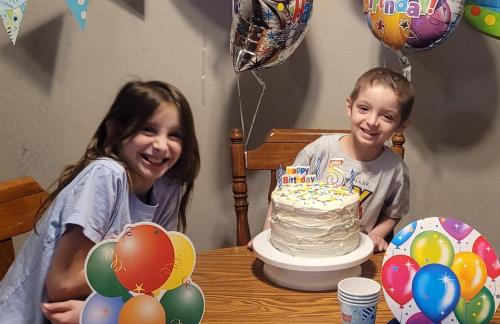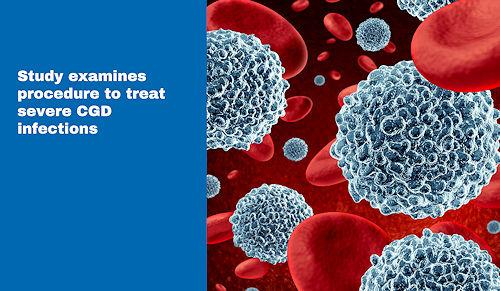
-
Understanding primary immunodeficiency (PI)

Understanding PI
The more you understand about primary immunodeficiency (PI), the better you can live with the disease or support others in your life with PI. Learn more about PI, including the various diagnoses and treatment options.
-
Living with PI
-
Addressing mental health
-
Explaining your diagnosis
- General care
- Get support
- For parents and guardians
-
Managing workplace issues
- Navigating insurance
-
Traveling safely

Living with PI
Living with primary immunodeficiency (PI) can be challenging, but you’re not alone—many people with PI lead full and active lives. With the right support and resources, you can, too.
-
Addressing mental health
-
Get involved

Get involved
Be a hero for those with PI. Change lives by promoting primary immunodeficiency (PI) awareness and taking action in your community through advocacy, donating, volunteering, or fundraising.
-
Advancing research and clinical care
-
Grants
-
IDF surveys
-
Participating in clinical trials
-
Diagnosing PI
-
Consulting immunologist
-
Clinician education

Advancing research and clinical care
Whether you’re a clinician, researcher, or an individual with primary immunodeficiency (PI), IDF has resources to help you advance the field. Get details on surveys, grants, and clinical trials.
-
Grants
Dangers of Springtime Exposures for People with CGD
April’s arrival means that the much-anticipated sights and sounds of spring and summer are just around the corner. But springtime also ushers in seasonal challenges for people living with chronic granulomatous disease (CGD). Being diagnosed with CGD doesn’t mean you have to stay indoors, but a bit of knowledge can go a long way. Fungal and bacterial exposures are prevalent in everyday life, but springtime may bring additional exposures and there are some precautions that can be taken to avoid them and reduce infection risk.
AVOIDING INFECTION
The following are several precautions to keep in mind:
- Swimming. Many physicians suggest that swimming should be confined to well-chlorinated pools. Ponds and brackish water, in particular, may expose patients to organisms that are specifically dangerous in CGD. Swimming in even large lakes and rivers carry some risk. Ocean bathing in clean areas appears to have a lower risk than swimming in bodies of freshwater and rivers.
- Shoes. Always wear shoes outdoors.
- Mulch. A major risk is the handling of garden mulch (shredded moldy tree bark) or potting soil. This type of exposure can cause a severe life-threatening pneumonia due to inhalation of the fungus Aspergillus and bacteria, which can live in decaying plant matter or soil. People with CGD should remain indoors during mulching in neighboring yards. Once the mulch is settled firmly on the ground and is not being spread or raked, it is much less of a danger to people with CGD.
- Spring cleaning. Individuals with CGD should avoid handling of dirt, as well as grass cuttings, decaying leaves, garden mulch (shredded moldy tree bark), and potting soil because they contain high levels of fungi and bacteria. As such, avoid activities such as turning manure or compost piles, repotting house plants, cleaning cellars or garages, removing carpets, performing demolition, digging in dirt, cutting grass, raking leaves, and hayrides.
- Playgrounds. Look for playgrounds without woodchips, as they can harbor fungi. Asphalt, rubber mats, and grass surfaces are fine. The risk here is more problematic for small children who may dig in or play with the woodchips. The risk to teenagers or adults from woodchip playgrounds is quite minimal from simply walking or running over the woodchips, and is no more risky than a walk on a path in the woods.
- Sports. In general, people with CGD should avoid sports or activities that involve kicking up or playing in dust and dirt. Baseball, for example, is not recommended for people with CGD, as "sliding into base" involves direct contact with dirt and dust. People with CGD report that they enjoy participating in a wide array of sports and outdoor activities, such as biking, yoga, tennis, running/jogging, ice hockey, riding scooters, skateboards, and golf. Even soccer played on a grassy field is likely a safe sport for people with CGD.
For more information about programs and resources for individuals and families living with CGD, contact IDF via Ask IDF or 800-296-4433.
Diagnosis
Related resources
Sign up for updates from IDF
Receive news and helpful resources to your cell phone or inbox. You can change or cancel your subscription at any time.





The Immune Deficiency Foundation improves the diagnosis, treatment, and quality of life for every person affected by primary immunodeficiency.
We foster a community that is connected, engaged, and empowered through advocacy, education, and research.
Combined Charity Campaign | CFC# 66309




